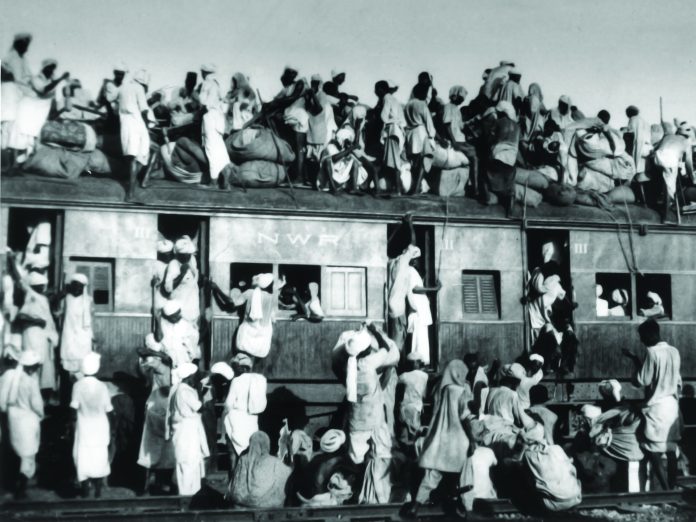Part III
Interaction Team
After the Lahore Resolution of 1940, the struggle for Pakistan entered a crucial phase that would see the demands of Indian Muslims evolve from a call for autonomy into a full-fledged movement for independence. The resolution marked the beginning of a series of events, negotiations, and confrontations that would eventually culminate in the creation of Pakistan in 1947. This narrative of the Pakistan Movement is a story of political strategy, communal tensions, and the relentless pursuit of a separate homeland by the Muslim League, led by Muhammad Ali Jinnah.
The Lahore Resolution was a watershed moment in the history of the Indian subcontinent. It provided a clear ideological direction for the Muslim League, setting the stage for the intense political battles that would follow. However, the road to Pakistan was far from straightforward. The British, who were still the colonial rulers, were embroiled in World War II and were primarily concerned with securing Indian support for the war effort.
In this context, they sent the Cripps Mission to India in 1942, proposing a dominion status for India after the war, with the option for provinces to opt out of a united India. While the Congress rejected the proposal outright, the Muslim League saw it as an opportunity to push its agenda for a separate state. The mission’s failure highlighted the deepening rift between the Congress and the Muslim League, with the latter increasingly focused on the goal of Pakistan.
As the war dragged on, the political situation in India grew more complex. The Quit India Movement, launched by the Congress in 1942, demanded an immediate end to British rule. The movement was met with brutal repression by the British authorities, and many Congress leaders were imprisoned.
The Muslim League, under Jinnah’s astute leadership, chose to stay away from the movement, arguing that it did not address the concerns of Muslims and would only lead to a Hindu-majority government. This decision allowed the Muslim League to consolidate its power and emerge as the sole representative of Muslims in India. During this period, the League’s popularity surged, particularly in the Muslim-majority provinces, where the idea of Pakistan began to resonate more strongly.
The years 1945 and 1946 were pivotal in the Pakistan Movement. The end of World War II brought renewed attention to the question of Indian independence. The British, exhausted by the war and eager to extricate themselves from India, sought a solution that would satisfy both the Congress and the Muslim League. The Simla Conference of 1945, convened by the British Viceroy Lord Wavell, was one such attempt.
The conference aimed to form an interim government that would include both Congress and Muslim League representatives. However, the conference failed due to the Muslim League’s insistence that it be recognized as the sole representative of Indian Muslims. This failure only served to reinforce the League’s determination to achieve Pakistan.
In the 1946 elections, the Muslim League emerged as the dominant force among Muslim voters, securing 428 out of the 482 seats reserved for Muslims in the provincial legislatures. This impressive victory, particularly in Bengal where they won 113 out of 119 Muslim seats, and in Punjab with 73 out of 86 seats, reinforced their claim to be the sole representative of Muslim interests in India.
Additionally, the Muslim League achieved a clean sweep of all 30 Muslim seats in the central assembly. On the other hand, the Indian National Congress secured a majority of the general (non-Muslim) seats, winning 923 out of 1,585 provincial seats and 91 out of 102 seats in the central assembly. These results highlighted the deepening communal divide, with the Muslim League’s success significantly bolstering their demand for a separate state, which would later become Pakistan.
The general elections of 1946 were, in effect, a referendum on the demand for Pakistan. The decisive victory of the Muslim League, with its call for a separate Muslim state, demonstrated that the idea of Pakistan had widespread support among Indian Muslims, further polarizing the political landscape and setting the stage for the eventual partition of India.
In the aftermath of the 1946 elections, the British government sent the Cabinet Mission to India to devise a solution that would keep India united while addressing the Muslim League’s demand for autonomy. The resulting Cabinet Mission Plan proposed a federal structure with a weak central government and autonomous groups of provinces, which was initially accepted by both the Congress and the Muslim League.
However, disagreements over the interpretation and implementation of the plan soon surfaced, with the Muslim League growing increasingly skeptical that it would lead to the creation of a truly independent Pakistan. Frustrated by the perceived failure of constitutional negotiations to safeguard Muslim interests and achieve a separate state, the Muslim League withdrew its support from the plan, resulting in a political deadlock.
In response, the League called for Direct Action Day on August 16, 1946, to demonstrate their demand for a separate Muslim state, led to one of the most violent episodes in the lead-up to India’s independence, resulting in large-scale communal riots, particularly in Calcutta (now Kolkata).
Organized by the All-India Muslim League to support the demand for a separate Muslim state of Pakistan, the day quickly descended into widespread violence between Hindus and Muslims. Over the course of four days, more than 4,000 people were killed, and an estimated 100,000 people were left homeless. The brutality of these riots significantly deepened the Hindu-Muslim divide, contributing to the inevitability of the partition of India and the creation of Pakistan in 1947.
As communal tensions escalated, the British government realized that partition might be the only viable solution to the conflict. In early 1947, Lord Mountbatten was appointed as the last Viceroy of India with the task of overseeing the transfer of power. Mountbatten quickly concluded that the partition of India into two separate dominions was the only way to prevent further bloodshed. On June 3, 1947, the Mountbatten Plan was announced, proposing the creation of the independent states of India and Pakistan. The plan was accepted by both the Congress and the Muslim League, setting the stage for the formal creation of Pakistan on August 14, 1947.
The partition of India was accompanied by one of the most tragic episodes in the subcontinent’s history. The Radcliffe Boundary Commission, tasked with drawing the borders between India and Pakistan, had only a few weeks to complete its work. The boundaries it drew divided the provinces of Punjab and Bengal, leading to mass migrations as millions of Muslims, Hindus, and Sikhs fled to the newly created states.
The migration was marked by horrific communal violence, with entire villages being massacred, and trains carrying refugees attacked. The scale of the violence and the humanitarian crisis that followed were staggering, with estimates of the death toll ranging in the hundreds of thousands.
Despite the chaos and suffering, the creation of Pakistan was a moment of triumph for the Muslim League and its supporters. The dream of a separate homeland for Muslims, articulated in the Lahore Resolution seven years earlier, had finally become a reality. However, the challenges facing the new state were immense. Pakistan had to establish a functioning government, manage the refugee crisis, and define its national identity.
The division of assets, the establishment of borders, and the distribution of military resources between India and Pakistan added to the complexity of the situation. Moreover, the assassination of Mahatma Gandhi in January 1948 by a Hindu nationalist further strained relations between the two new states, casting a shadow over the early years of independence.
The early years of Pakistan were marked by a struggle to overcome these challenges. The country faced economic difficulties, a lack of infrastructure, and political instability. Yet, despite these problems, Pakistan managed to establish itself as a sovereign state, with its own government, military, and economy. The legacy of the Pakistan Movement continued to shape the identity and politics of Pakistan, with the principles of the Lahore Resolution serving as a guiding force in the new nation’s development.
In retrospect, the Pakistan Movement was not just a political struggle but also a profound social and cultural transformation. It was a movement that mobilized millions of Muslims across the subcontinent, uniting them in the quest for a separate homeland. The movement brought together people from diverse backgrounds and regions, forging a collective identity centered around the idea of Pakistan. It was a movement that challenged the existing power structures and demanded a reimagining of the subcontinent’s political landscape. The Pakistan Movement is a story of resilience and determination, a story of a people who, despite overwhelming odds, remained steadfast in their pursuit of a separate nation. It is a story of leadership, with figures like Muhammad Ali Jinnah, Liaquat Ali Khan, and others playing pivotal roles in guiding the movement towards its goal. It is also a story of sacrifice, with countless lives lost in the struggle for independence. The creation of Pakistan was the culmination of this long and arduous journey, a moment of triumph that came at a great cost but also brought with it the promise of a new beginning.
Pakistan Zindabad!







